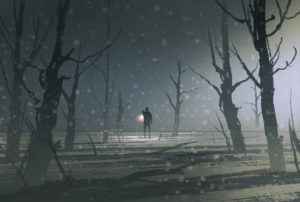 The news is so full of dark and scary stories these days that it can be overwhelming. I, for one, find it troubling to hear about repeated shootings where innocent lives are taken, the growing number of teen suicides due in part to a spike in adolescent depression, the unprecedented opioid epidemic, and the sexual abuse and harassment that has come to light in recent months.
The news is so full of dark and scary stories these days that it can be overwhelming. I, for one, find it troubling to hear about repeated shootings where innocent lives are taken, the growing number of teen suicides due in part to a spike in adolescent depression, the unprecedented opioid epidemic, and the sexual abuse and harassment that has come to light in recent months.
The fact these types of stories are constantly featured in news and social media cycles can bring us down in significant ways. This is particularly true when we see the dire effect on our youth, as well as the damage to families, friends, and communities. Just trying to absorb these stories can invoke a sense of hopelessness and helplessness.
It may seem unusual for a counselor to start an article with so much gloom and doom. How depressing! But I do so to point out that because we are bombarded by such volume and intensity of negative information 24/7, we need more effective means of coping and managing the fear and trauma that comes with it. We need to be able to find relief and a sense of balance and safety in our daily lives.
I work with individuals and families who deal with these kinds of concerns in very personal ways. When they first come to therapy, their darkness is stark, real, and often overwhelming. It’s imperative for me to not only notice but to join them in that darkness, such that the power of the dark space is recognized and revered for what it is and the impact it has.
At this point in the therapeutic process, there is no light—just the small adjustments made by the human senses to initiate calmness. There is little to no means of navigation through this space.
As the therapist, I am initially charged with illuminating this space. I think of this as being in charge of a flashlight, which I must hold until the person I am with is able. I shine a dim beam of light in the space until the shapes and contours of the pain start to appear. The brightness of the beam depends on how much the person in therapy can tolerate seeing at once.
So, what does the flashlight represent and how can it be used to soothe and heal emotional pain? The flashlight is the means by which we can begin to reconcile and come to terms with what has happened.
As time goes on, my job becomes more about adjusting the flashlight beam so the space becomes incrementally brighter. The events of whatever tragedy took place become more understood and digestible, if only for brief, erratic segments of time. Emotions become more readily distinguishable and we begin the long journey of softly illuminating the space. The ultimate goal is for the person in therapy to take over holding the flashlight—perhaps temporarily at first, but with more confidence and self-direction as time passes.
So, what does the flashlight represent and how can it be used to soothe and heal emotional pain? The flashlight is the means by which we can begin to reconcile and come to terms with what has happened. It is a tool for assessing the damage done to our psyche in the midst of devastation so we can begin the process of sorting out and reorganizing our perceptions of our new realities post-calamity. In the end, it is about finding some solace and peace.
It’s important to point out that this process is not a quick, easy fix. Many have found eye movement desensitization and reprocessing (EMDR) to be helpful in giving the brain a jump-start to reprocessing chaotic aftermath. However, it takes time to fully comprehend and absorb what has happened and how that affects our new world of emotions.
For a more global or societal experience of trauma, the process is much the same, though perhaps at a less intense level. When we see or hear news about another terrorist attack, mass shooting, major earthquake, or bombing of innocent children, we may be shaken by fear, disillusionment, sadness, and a sense of hopelessness and helplessness.
But flashlights are available in this arena as well. Some recent examples include youth activism in response to school shootings and the #MeToo/#TimesUp movements bringing awareness and voice to the unacceptability of sexual abuse and harassment.
These examples give us pause to reflect on the human capacity to find sources of light, be they others showing courage to respond proactively or our own internal strength and, perhaps, spirituality that help us reorient and heal. We can then hold that flashlight firmly until the darkness recedes.
If you need help, contact a licensed therapist.
Reference:
Slay-Westbrook, S. (2016). Respect-focused therapy: Honoring clients through the therapeutic relationship and process. United Kingdom: Taylor & Francis.

The preceding article was solely written by the author named above. Any views and opinions expressed are not necessarily shared by GoodTherapy.org. Questions or concerns about the preceding article can be directed to the author or posted as a comment below.


 Respect-Focused Therapy: Honoring Pain, Yourself, and Others
Respect-Focused Therapy: Honoring Pain, Yourself, and Others 5 Defense Mechanisms That Both Protect and Hurt Us
5 Defense Mechanisms That Both Protect and Hurt Us I Have the Worst Luck: Can Trauma Make Us Feel Unlucky?
I Have the Worst Luck: Can Trauma Make Us Feel Unlucky?

Please fill out all required fields to submit your message.
Invalid Email Address.
Please confirm that you are human.
Leave a Comment
By commenting you acknowledge acceptance of GoodTherapy.org's Terms and Conditions of Use.